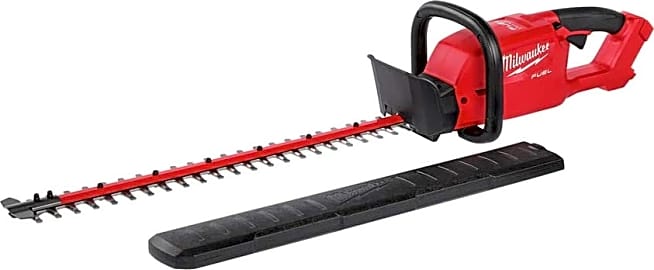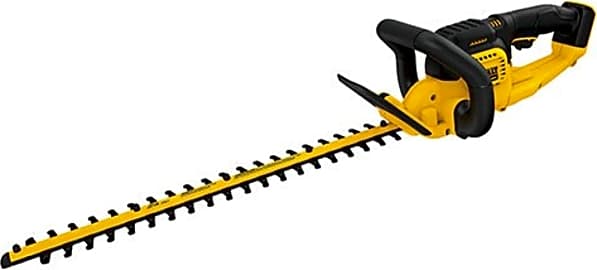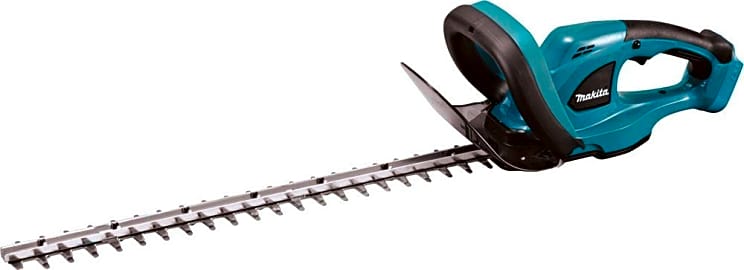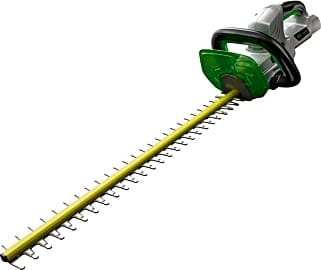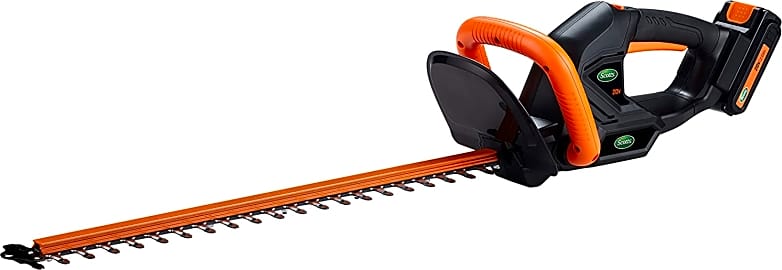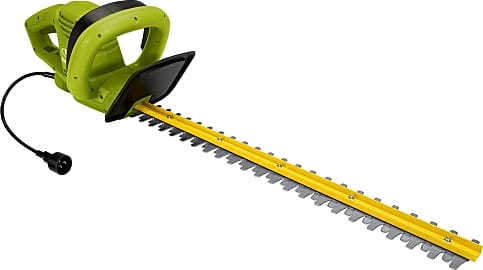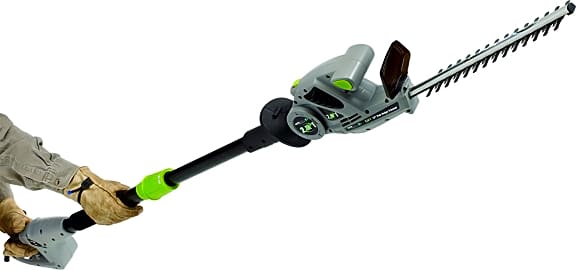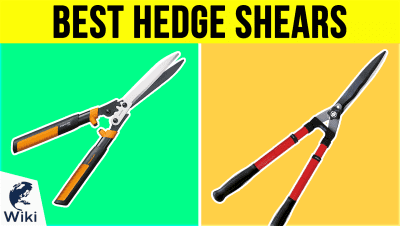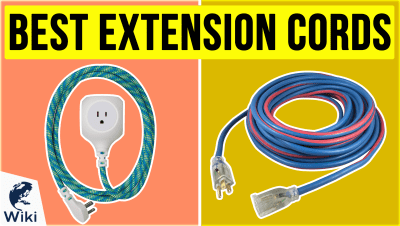The 10 Best Hedge Trimmers

This wiki has been updated 43 times since it was first published in March of 2015. Fancy trying your hand at topiary and carving elegant animal designs into your shrubbery? No? Well, even if you're simply looking to keep your plants and bushes tidy on a regular basis, then one of these hedge trimmers should do the trick. We've included both electric- and gas-powered options, as well as cordless models, so you can pick the one that best suits your pruning preferences. When users buy our independently chosen editorial picks, we may earn commissions to help fund the Wiki.
Editor's Notes
April 08, 2021:
This list still had a lot of good things going for it, but that didn’t stop us from finding a number of places to improve. For one thing, we replaced the Scotts Outdoor HT10020S with the Scotts Outdoor LHT12220S, believing that this cordless model was likely to be more convenient for more of our users. That being said, corded models do present their own conveniences, specifically for people tackling projects too big for a single battery. So, if that’s you, don’t be afraid to consider the HT10020S. It appears to perform decently, and is one of the most affordable options on the market. We also noticed that the Worx WG209 and VonHaus Cordless seemed to be no longer available, and although we were able to find suitable replacement options for their respective brands, we opted to include higher-end models from alternate companies, instead.
The Milwaukee 2726-20 clinched a spot near the top of our list with its 24-inch blade length and 3,400-strokes-per-minute cut rate, which are both exceptional for this category, especially among battery-powered options. Although it’s sold as a bare tool, it can run for up to two hours on one of the company’s three-amp-hour XC8.0 batteries, which amounts to another above-average rating for this model.
The Husqvarna 122HD60 became the only gas-powered option to hold a spot on our list, and maybe we should get into why: While loyalists may lament the gradual disappearance of petrol-powered gear in this space – and they might have a point, because there’s no denying that electric models are yet to catch up to the performance these machines offer – we feel that our audience, which includes a mix of homeowners, hobbyists and serious professionals, will often be better served by a battery-powered model. Yeah, they’re not as powerful, but they also tend to be lighter, quieter, more affordable, easier to start, and they don’t spew exhaust constantly — which are all pretty big pluses. But, if performance trumps all those considerations for you, give some thought to the 122HD60, which delivers an impressive 4,050-strokes-per-minute cut rate and features a convenient adjustable handle.
Options like the tools on this list are probably the best way to take on a big project at ground level, but if you just need to do some light pruning then you might be able to get by with a simple pair of manual hedge shears. Or, if you’re looking to trim some foliage that’s a little further off the ground, then you might prefer to check out our list of pole saws.
February 17, 2020:
Removed the Remington RM5124TH from the list because of availability issues, and eliminated the GreenWorks 22102 due a short lifespan. For some, the latter model only lasts for a handful of uses.
We gave the Makita XHU02Z a slight upgrade in the rankings, noting its quiet operation, extremely sharp blades and impressive battery life. Makita has an excellent reputation for a reason.
Since we had to remove two low-cost options, we tried to include another affordable model as one of the replacements. The Scotts Outdoor HT10020S delivers a blade speed of more than 3,000 strokes per minute, putting it up there with many of the more high-end trimmers. Also added the Craftsman CMCHTS820D1, which can cut through branches up to an inch-and-a-half thick.
Special Honors
Homelite UT44110 Anyone who’s used power tools extensively has probably dealt with numb, fatigued hands from time to time. To prevent that type of discomfort, this lightweight model is designed to generate significantly less vibration than most trimmers. It also comes with a two-year warranty. homelite.com
Stihl Trimmers All Stihl’s tools are thoughtfully built with streamlined, well-balanced bodies that provide the user a great deal of control. Their lines include gasoline, electric and battery-powered models, suitable for occasional home use, professional landscaping and anywhere in between. stihlusa.com
How To Choose A Hedge Trimmer
And for applications lying in between, the convenience offered by a battery powered unit might be the ideal.
A good hedge trimmer is an able, versatile tool capable of much more than merely taming those boxwoods or laurel plants into shape now and then. A hedge trimmer can be used to prune and trim smaller twigs and branches off trees, to cut back and thin flowering and edible plants, and even to mow down swaths of thicker grasses, reeds, vines, and more. Simply put, a hedge trimmer can cut its way through almost any organic material provided it's not too thick.
There are two basic decisions you need to make when investigating which hedge trimmer best suits your purposes: decide on the blade length you need and ** the power source** preferred based on your property's size and features, and on your own preferences.
Large hedge trimmers generally have blades measuring 24 inches, while smaller units have a blade length of under 18 inches. Take a moment or two to measure the width of the hedges you will be trimming or to see how much coverage you want on each pass when shaping trees or bushes to help you decide which length works for you.
If a smaller unit will serve, then save your cash and opt for the diminutive tool. Many hedge trimmers can even be mounted on poles in order to extend your reach, and these expandable units are typically not much more expensive. A shorter blade on a long pole may be just what you need.
Gasoline-fueled hedge trimmers often offer a little more cutting power than electric options, but this extra power is usually overkill for home use. Gas-powered trimmers can be easily refilled when empty, which is a definite convenience. On the other hand, plug-in electric hedge trimmers offer the easiest operation in terms of power source, but their reliance on extension cords can be an annoyance, as it restricts your movement.
For the smaller property that requires only occasional trimming, a plug-in hedge trimmer with a shorter blade is often the right choice: these units are affordable and effective, if not highly efficient. For the landscaping professional who needs to chop through thick brambles and branches for hours on and, a powerful, gas-operated model without restricted movement may serve best. And for applications lying in between, the convenience offered by a battery powered unit might be the ideal.
How To Trim A Hedge
If you want to trim hedges, bushes, and perennial plants properly, you need to start doing it early. Rather than letting young plants grow untouched for long periods of time, start trimming and shaping them when they are new: this will promote thick, robust growth rather than letting individual branches grow long and straggly, producing leaves only on the exterior of the plant. The longer you wait to trim a hedge in particular, the worse that plant will look when you finally get around to cutting it back, thus achieving a counterproductive result.
Move slowly and steadily with your trimmer at a slightly acute angle relative to the ground and the top of the hedge.
To trim standard hedges where multiple plants have been trained together to form one linear mass -- this arrangement is often called a "formal hedge" -- you might want to consider using evenly spaced stakes or a taut string to establish the height to which you will trim the plants. To trim the hedges to the desired height, simply move the trimmer slowly and steadily along the top of the hedges. The first pass may not catch every little leaf or branch; resist the urge to focus on outlines, instead keeping your motion steady to create uniformity of shape.
When trimming the sides of your hedges, use the same steady approach wherein you disregard those few branches or leaves your trimmer misses on the first pass. Move slowly and steadily with your trimmer at a slightly acute angle relative to the ground and the top of the hedge. Your hedges should be slightly narrower at the top than at the bottom: this arrangement allows more leaves to collect more sunlight and keeps the plant growing evenly throughout its mass.
Whenever possible, trim hedges in the earlier morning or the later afternoon when the plant will have several hours free from direct sunshine. Sunlight can dry out and damage a plant when it falls on raw, freshly cut branch ends for too long.
Hedge Trimmer Safety And Maintenance
A hedge trimmer is a safe and efficient tool when used properly and with care, but can indeed present quite a danger if used recklessly. Hedge trimmer blades are sharp and potentially injurious even when the unit is not turned on, so make sure to always place the hedge trimmer where it has minimal risk of causing accidental injury. Hang your trimmer out of the way when it is not in use, or place it on a shelf with the blade aimed away from walkways or from where hands might reach.
Gloves are a must both to protect your hands from accidental proximity to the blades and from the pokes and cuts that come with close proximity to thorns and brambles.
And when a hedge trimmer is turned on, make sure no one but its operator is nearby, and that the operator -- namely yourself -- is using proper safety gear and caution. When running a hedge trimmer, you should be wearing gloves, eye protection, thick pants, and possibly ear protection as well. Gloves are a must both to protect your hands from accidental proximity to the blades and from the pokes and cuts that come with close proximity to thorns and brambles. As for eye protection, a hedge trimmer can send bits of organic debris flying faster than most people can react. Keep your eyes safe from scratches by keeping them covered.
Thick pants such as blue jeans are a good idea in case that trimmer falls from your grip and grazes your legs. Durable pants also keep you safe from scratches caused by twigs, branches, and so forth.
Many hedge trimmers operate at a decibel level that is perhaps unpleasant but not unsafe for your ears. A few gas powered units do in fact create enough noise to present an actual threat to your hearing, though. If you are using one of these units, ear muffs or ear plugs should be part of your standard gear.


